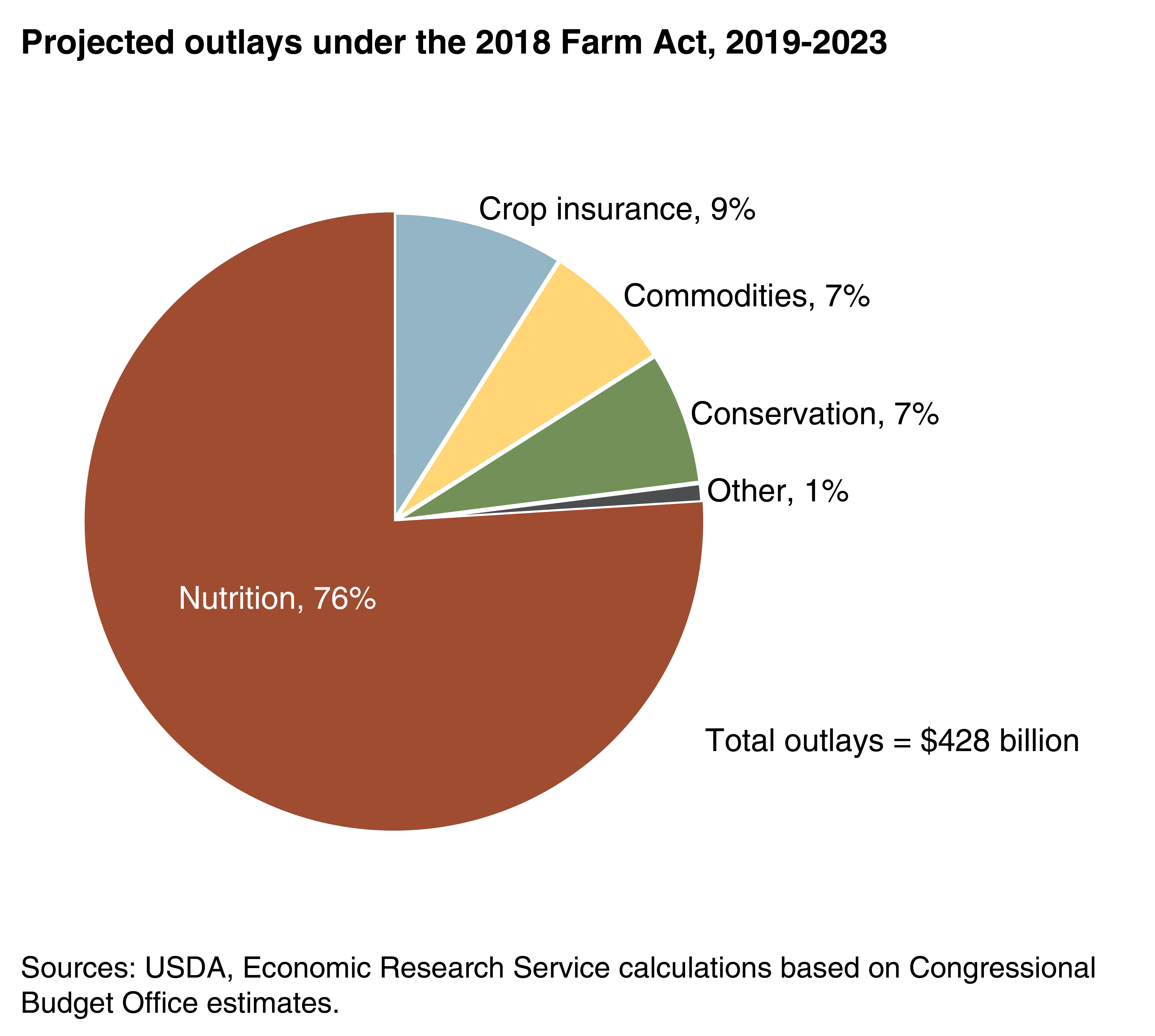The United States addresses agricultural and food policy through a variety of programs, including nutrition assistance, crop insurance, commodity support, and conservation. Much of the legal framework for agricultural and food policy is set through a legislative process that occurs approximately every 5 years.
The current farm law, the Agriculture Improvement Act of 2018 (2018 Farm Act), was signed on December 20, 2018, and will remain in force through 2023, although some provisions extend beyond 2023. The 2018 Farm Act makes few major changes in agricultural and food policy. Nutrition policy, particularly the Supplemental Nutrition Assistance Program (SNAP), will continue with minor changes. Crop insurance options and agricultural commodity programs will exist much as under the 2014 Farm Act. All major conservation programs are continued, although some are modified significantly. Programs are expanded for trade, research and extension, energy, specialty crops, organic agriculture, local and regional foods, and beginning/socially disadvantaged/veteran farmers and ranchers.
The 2018 Farm Act increases FY2019-FY2023 spending by $1.8 billion (less than 1 percent) above the level projected for a continuation of the previous farm act. The Congressional Budget Office projects that 76 percent of outlays under the 2018 Farm Act will fund nutrition programs, 9 percent will fund crop insurance programs, 7 percent will fund conservation programs, 7 percent will fund commodity programs, and the remaining 1 percent will fund all other programs, including trade, credit, rural development, research and extension, forestry, horticulture, and miscellaneous programs.

Topic Area Highlights and Economic Implications
The core research and data program of the Economic Research Service covers the breadth of USDA programs affected by the 2018 Farm Act: farming, nutrition, conservation, trade, rural development, research, and energy. ERS will provide highlights and summaries of important new programs and provisions, as well as some economic implications of the new farm legislation based on ERS expertise, in the following policy areas:
- Crop Commodity Programs (includes provisions from Titles I and XI)
- Dairy & Livestock (includes provisions from Titles I and XII)
- Conservation (Title II only)
- Trade (Title III only)
- Nutrition (Title IV only)
- Credit (Title V only)
- Rural Development (Title VI only)
- Research, Extension, and Related Matters (Title VII only)
- Energy (Title IX and VII)
- Crop Insurance (Title XI only)
- Specialty Crops (includes provisions from Titles III, IV, VII, X, XI, and XII)
- Organic Agriculture (includes provisions from Titles II, III, V, VII, X and XI)
- Local and Regional Foods (includes provisions from Titles IV, VI, VII, X, XI, and XII)
- Beginning, Socially Disadvantaged, and Veteran Farmers and Ranchers (includes provisions from Titles I, II, V, VII, XI, and XII).
ERS Policy-Related Research
The core research and data program of the Economic Research Service covers the breadth of USDA programs touched by farm legislation.
See also:
- The 2018 Farm Bill (P.L. 115-334): Summary and Side-by-Side Comparison (Congressional Research Service)
- Agricultural Act of 2014: Highlights and Implications
- 2008 Farm Bill Side-by-Side Comparison with Previous Law
- 2002 Farm Bill: Provisions and Economic Implications
- 1996 Farm Bill Side by Side
For further information:
